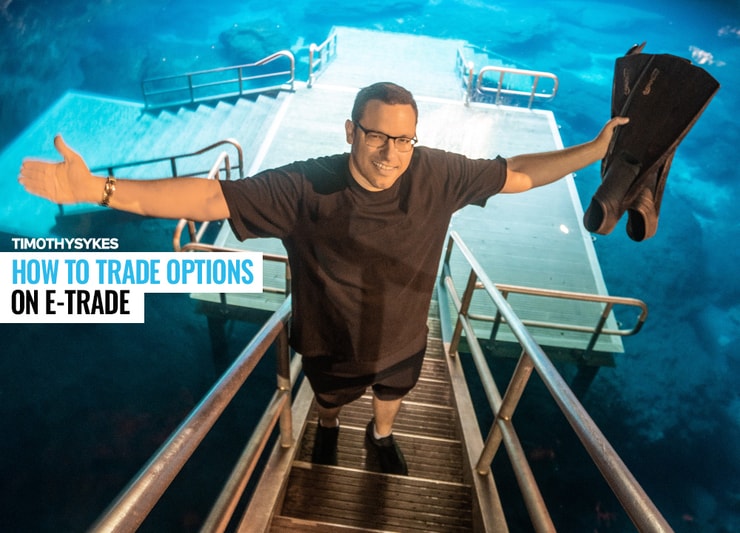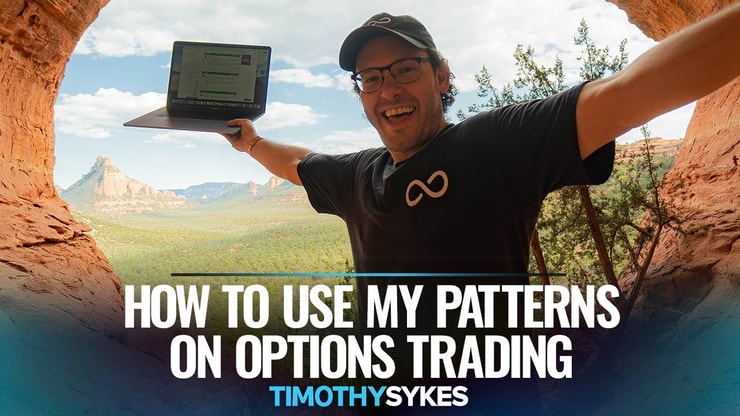Learning how to trade options on E-Trade consists of a few simple steps. There’s a reason it’s one of the most popular brokers in the world.
E-Trade from Morgan Stanley is one of the brokers I use most for trading stocks. It’s not the only broker I use, but I’ve used it enough to know it works for me. That’s what’s important in trading, no matter your strategy — finding a brokerage firm that works for you.
I’ve used dozens of trading platforms over the years. There’s no rule that says you have to marry your broker. This is especially true in this age of no account minimums.
The one thing that hasn’t changed about choosing a broker is the fact that you have to educate yourself before you make your decision.
I think E-Trade from Morgan Stanley is a good online broker for trading options, but you have the final say. Read on for a deep dive into E-Trade’s features and decide whether it’s right for you!
Table of Contents
Trading on E-Trade

2025 Millionaire Media, LLCE-Trade has two main trading platforms. Each caters to different kinds of traders. Both platforms are free for E-Trade users.
E-Trade Web is its basic platform. It’s less comprehensive but still boasts robust technical analysis tools and dynamic charting. There’s also a mobile version of E-Trade Web for traders on the go. You can even use it with your Apple Watch!
More experienced traders should look into Power E-Trade. It features more trading tools, versatile charts, and customizable options chain views. Power E-Trade also has a mobile version that lets you check watchlists while out and about.
What else can you find on E-Trade? Here are some of its features:
- No commissions
- No inactivity fees
- A big selection of tradable assets
- 24/7 phone, email, and chat customer support
- No account deposit minimum
Looking for other online brokers? Read my reviews of Questrade, Charles Schwab, and Interactive Brokers.
Benefits of Trading Options Using E-Trade
E-Trade is one of the brokers I use most. It isn’t perfect, but it hasn’t given me any reason to abandon it. Here are some of its strengths:
Fast Options Trade Execution Speed
I want my trades executed quickly. E-Trade measures its executions as fast as 0.07 seconds. This isn’t the best speed out there, but it won’t screw up your trades either.
Option Contract Fee Discounts
E-Trade has zero commission fees on options trading, like most brokers these days. There’s a $0.65 per contract fee on options trades, which is also an industry standard.
Here’s the unusual thing about E-Trade: active options traders only need to pay $0.50 per contract. You can get this discount by making at least 30 trades per quarter.
More Breaking News
- Is Futu’s Stock an Underrated Gem?
- Taseko Mines Stock Surge: What’s The Buzz?
- Taseko Mines’ New Price Target Raises Eyebrows
Wide Range of Tradable Securities
We’re here for options trading, but knowing what other assets a broker offers is still a good idea. E-Trade offers the following:
- Stocks
- Fractional shares
- Mutual funds
- Options contracts
- Futures contracts
- Exchange-traded funds
- Bonds
Numerous Research Providers and Educational Material
E-Trade offers research material from multiple financial services firms. You can even access research from 10 firms for free. Some of its research providers are Morgan Stanley, Thomson Reuters, and MarketEdge.
E-Trade is also known for its educational content for traders of all experience levels. A beginner trader or someone who’s new to E-Trade might appreciate its videos on options basics. Its webinars on advanced options strategies can help if you’re more experienced.
Strong Customer Support
Solid customer service means your brokerage service is always available to help. E-Trade has 24/7 customer service via phone, email, and chat. It also offers in-person assistance at its 31 branch locations.
E-Trade can also help aspiring options traders through its team of licensed options specialists.
Robust Security Measures
E-Trade offers two-factor authentication on its desktop, web, and mobile apps. Mobile users can also use biometrics to get into their online brokerage accounts.
Like other U.S. brokers, E-Trade accounts are SIPC protected up to $500,000.
Steps to Start Trading Options on E-Trade

2025 Millionaire Media, LLCHow do you start trading options on E-Trade? Here’s a four-step guide:
1. Open an E-Trade Account
You’ll have three account options to choose from — get the brokerage account to start trading.
2. Log in to the E-Trade App
Once you have an account, log into your chosen E-Trade platform. Both E-Trade Web and Power E-Trade offer options trading. They’re both fairly versatile, though not to the degree you’ll find on StocksToTrade, my favorite trading platform (and the one I helped design).
E-Trade is integrated into StocksToTrade, allowing you to trade directly from this powerful platform!
Give StocksToTrade a try today — a 14-day trial is only $7.
3. Select Options on the App
You need approval before you can trade options on E-Trade. The broker will review your trading experience to assign your level. There are four levels of options trading.
Level 1 traders can only access basic options strategies like covered positions. Higher-level traders have more access to advanced options strategies.
It might take a few business days for your application to get approved.
4. Start Trading Options
Once you’re approved, you’re ready to trade options on E-Trade! My usual trading principles still apply here:
- Make your own options trades. Other people’s options trades may not match your goals and risk. They definitely won’t match your timing.
- Learn options strategies from successful traders. Find a program, a community, a favorite YouTube channel.
- Create your own stock watchlists and options trading plans. Don’t take someone else’s stock picks. Do your own research.
- Record every trade and review your trading journal regularly. This helps you identify what went right and what can be improved.
If you’re searching for a mentorship program, check out my former student Mark Croock’s Evolved Trader. He’s taken my penny stock strategies and applied them to options trading — making $3.9 million in career earnings in the process!
Here’s a sneak peek of Mark’s curriculum:
How to Trade Options on E-Trade FAQs
Trading options on E-Trade can be tricky. Here’s a run-down on the most common questions.
How much money do I need to trade options on E-Trade?
There is no minimum account balance required to apply for options trading. You can buy and write covered options contracts with a cash account. To create spreads or open uncovered positions, you must be trading in a margin account with a $2,000 minimum deposit.
Is options trading on E-Trade free?
Options trading on E-Trade is commission-free. But you still have to pay the $0.65 contract fee. Active traders get a discount and only pay $0.50.
How do I get Level 3 options on E-Trade?
You need to have a margin account to get approved for Level 3 options.











Leave a reply